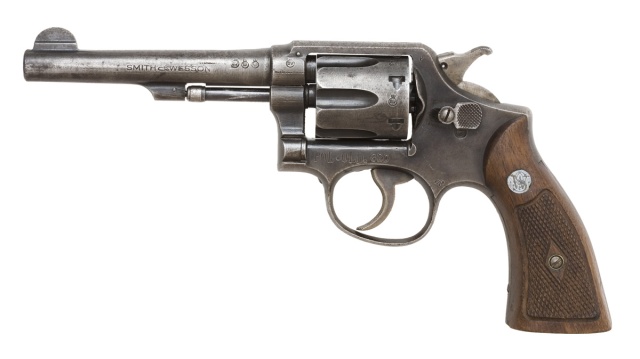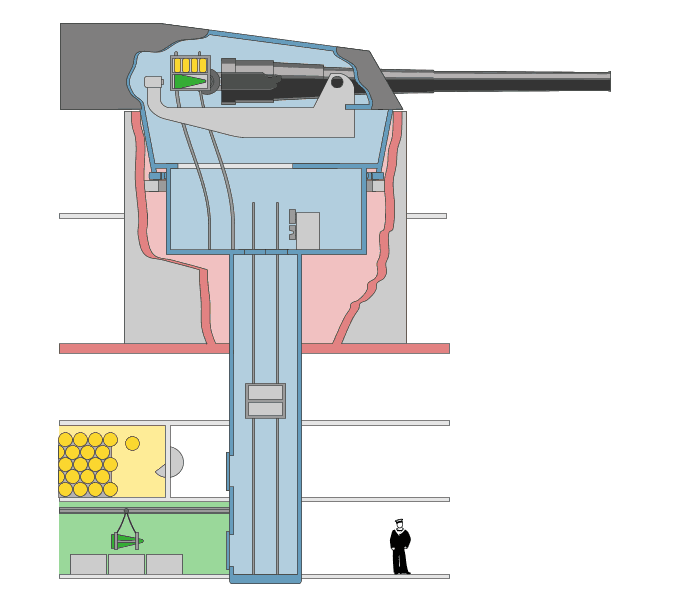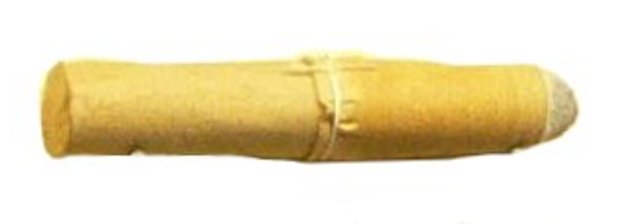|
Kammerlader
The ''Kammerlader'', or "chamber loader", was the first Norwegian breech-loading rifle, and among the first breech loaders adopted for use by an armed force anywhere in the world. A single-shot black-powder rifle, the ''kammerlader'' was operated with a crank mounted on the side of the receiver. This made it much quicker and easier to load than the weapons previously used. ''Kammerladers'' quickly gained a reputation for being fast and accurate rifles, and would have been a deadly weapon against massed ranks of infantry. The ''kammerlader'' was introduced in 1842, and it is thought that about 40,000 were manufactured until about 1870. While the first flintlock breech-loading rifles, such as the Ferguson, were launched decades before 1842, Norway was among the first European countries to introduce breech loaders on a large scale throughout its army and navy. The ''kammerladers'' were manufactured in several different models, and most models were at some point modified in some wa ... [...More Info...] [...Related Items...] OR: [Wikipedia] [Google] [Baidu] |
Firearm Action
In firearms terminology, an action is the functional mechanism of a breech-loading firearm that handles (loads, locks, fires, extracts and ejects) the ammunition cartridges, or the method by which that mechanism works. Actions are technically not present on muzzleloaders, as all those are single-shot firearms with a closed off breech with the powder and projectile manually loaded from the muzzle. Instead, the muzzleloader ignition mechanism is referred to as the ''lock'' (e.g. matchlock, flintlock, caplock). Actions can be categorized in several ways, including single action versus double action, break action versus bolt action, and others. The term action can also include short, long, and magnum if it is in reference to the length of the rifle's receiver and the length of the bolt. The short action rifle usually can accommodate a cartridge length of or smaller. The long action rifle can accommodate a cartridge of , and the magnum action rifle can accommodate cartridges ... [...More Info...] [...Related Items...] OR: [Wikipedia] [Google] [Baidu] |
Breech-loading Weapon
A breechloader is a firearm in which the user loads the ammunition (cartridge or shell) via the rear (breech) end of its barrel, as opposed to a muzzleloader, which loads ammunition via the front ( muzzle). Modern firearms are generally breech-loading – except for replicas of vintage weapons. Early firearms before the mid-19th century were almost entirely muzzle-loading. Mortars and the Russian GP-25 grenade launcher are the only muzzleloaders remaining in frequent modern usage. However, referring to a weapon specifically as breech loading is mostly limited to single-shot or otherwise non-repeating firearms, such as double-barreled shotguns. Breech-loading provides the advantage of reduced reloading time, because it is far quicker to load the projectile and propellant into the chamber of a gun/cannon than to reach all the way over to the front end to load ammunition and then push them back down a long tube – especially when the projectile fits tightly and the ... [...More Info...] [...Related Items...] OR: [Wikipedia] [Google] [Baidu] |
Firearm Action
In firearms terminology, an action is the functional mechanism of a breech-loading firearm that handles (loads, locks, fires, extracts and ejects) the ammunition cartridges, or the method by which that mechanism works. Actions are technically not present on muzzleloaders, as all those are single-shot firearms with a closed off breech with the powder and projectile manually loaded from the muzzle. Instead, the muzzleloader ignition mechanism is referred to as the ''lock'' (e.g. matchlock, flintlock, caplock). Actions can be categorized in several ways, including single action versus double action, break action versus bolt action, and others. The term action can also include short, long, and magnum if it is in reference to the length of the rifle's receiver and the length of the bolt. The short action rifle usually can accommodate a cartridge length of or smaller. The long action rifle can accommodate a cartridge of , and the magnum action rifle can accommodate cartridges ... [...More Info...] [...Related Items...] OR: [Wikipedia] [Google] [Baidu] |
Remington M1867
The Remington M1867 was a rolling-block rifle, the first rifle using metallic cartridges to be adopted by the Norwegian and Swedish armies. Nominally it had a caliber of 4 decimal lines, but the actual caliber was 3.88 Norwegian decimal lines or 4.1 Swedish decimal lines (12.17 mm), and it fired a rimfire round with a 12.615 mm (.497 in) lead bullet. The 12.17 mm caliber was chosen because the Swedish army had approximately 30,000 new muzzle-loading M1860 and breech-loading M1864 rifles in 12.17 mm caliber in stock, rifles that were suitable for conversion to M1867 rolling-block rifles. With the exception of the first 10,000 rifles and 20,000 actions (for conversions of older rifles), which were made by Remington in the US, all Remington M1867 rifles and carbines were made under license in Norway and Sweden, by Kongsberg Vaapenfabrik in Norway, and by Husqvarna Vapenfabriks Aktiebolag and Carl Gustafs stads Gevärsfaktori in Sweden with the two Swedish manufact ... [...More Info...] [...Related Items...] OR: [Wikipedia] [Google] [Baidu] |
Breech-loading Weapon
A breechloader is a firearm in which the user loads the ammunition (cartridge or shell) via the rear (breech) end of its barrel, as opposed to a muzzleloader, which loads ammunition via the front ( muzzle). Modern firearms are generally breech-loading – except for replicas of vintage weapons. Early firearms before the mid-19th century were almost entirely muzzle-loading. Mortars and the Russian GP-25 grenade launcher are the only muzzleloaders remaining in frequent modern usage. However, referring to a weapon specifically as breech loading is mostly limited to single-shot or otherwise non-repeating firearms, such as double-barreled shotguns. Breech-loading provides the advantage of reduced reloading time, because it is far quicker to load the projectile and propellant into the chamber of a gun/cannon than to reach all the way over to the front end to load ammunition and then push them back down a long tube – especially when the projectile fits tightly and the ... [...More Info...] [...Related Items...] OR: [Wikipedia] [Google] [Baidu] |
Rifle
A rifle is a long-barreled firearm designed for accurate shooting, with a barrel that has a helical pattern of grooves ( rifling) cut into the bore wall. In keeping with their focus on accuracy, rifles are typically designed to be held with both hands and braced firmly against the shooter's shoulder via a buttstock for stability during shooting. Rifles are used extensively in warfare, law enforcement, hunting, shooting sports, and crime. The term was originally ''rifled gun'', with the verb ''rifle'' referring to the early modern machining process of creating groovings with cutting tools. By the 20th century, the weapon had become so common that the modern noun ''rifle'' is now often used for any long-shaped handheld ranged weapon designed for well-aimed discharge activated by a trigger (e.g., personnel halting and stimulation response rifle, which is actually a laser dazzler). Like all typical firearms, a rifle's projectile (bullet) is propelled by the contained def ... [...More Info...] [...Related Items...] OR: [Wikipedia] [Google] [Baidu] |
Paper Cartridge
A paper cartridge is one of various types of small arms ammunition used before the advent of the metallic cartridge. These cartridges consisted of a paper cylinder or cone containing the bullet, gunpowder, and in some cases, a primer or a lubricating and anti-fouling agent. Combustible cartridges are paper cartridges that use paper treated with oxidizers to allow them to burn completely upon ignition. History Paper cartridges have been in use for nearly as long as hand-held firearms, with a number of sources dating their use back to the late 14th century. Historians note their use by soldiers of Christian I in 1586, while the Dresden museum has evidence dating their use to 1591, and Capo Bianco writes in 1597 that paper cartridges had long been in use by Neapolitan soldiers. Their use became widespread by the 17th century. The first army to officially use paper cartridges is presumed to be "piechota wybraniecka" of Poland under the rule of Stephen Báthory. Cultural impact Pa ... [...More Info...] [...Related Items...] OR: [Wikipedia] [Google] [Baidu] |
Crank (mechanism)
A crank is an arm attached at a right angle to a rotating shaft by which circular motion is imparted to or received from the shaft. When combined with a connecting rod, it can be used to convert circular motion into reciprocating motion, or vice versa. The arm may be a bent portion of the shaft, or a separate arm or disk attached to it. Attached to the end of the crank by a pivot is a rod, usually called a connecting rod (conrod). The term often refers to a human-powered crank which is used to manually turn an axle, as in a bicycle crankset or a brace and bit drill. In this case a person's arm or leg serves as the connecting rod, applying reciprocating force to the crank. There is usually a bar perpendicular to the other end of the arm, often with a freely rotatable handle or pedal attached. Examples Familiar examples include: Hand-powered cranks * Spinning Wheel * Mechanical pencil sharpener * Fishing reel and other reels for cables, wires, ropes, etc. *Starting ... [...More Info...] [...Related Items...] OR: [Wikipedia] [Google] [Baidu] |
Partial Pressure
In a mixture of gases, each constituent gas has a partial pressure which is the notional pressure of that constituent gas as if it alone occupied the entire volume of the original mixture at the same temperature. The total pressure of an ideal gas mixture is the sum of the partial pressures of the gases in the mixture (Dalton's Law). The partial pressure of a gas is a measure of thermodynamic activity of the gas's molecules. Gases dissolve, diffuse, and react according to their partial pressures but not according to their concentrations in gas mixtures or liquids. This general property of gases is also true in chemical reactions of gases in biology. For example, the necessary amount of oxygen for human respiration, and the amount that is toxic, is set by the partial pressure of oxygen alone. This is true across a very wide range of different concentrations of oxygen present in various inhaled breathing gases or dissolved in blood; consequently, mixture ratios, like that of breathab ... [...More Info...] [...Related Items...] OR: [Wikipedia] [Google] [Baidu] |
Needle Gun
A needle gun (or needle rifle for varieties with rifling) is a firearm that has a needle-like firing pin, which can pass through the paper cartridge case to strike a percussion cap at the bullet base. Types Pauly A diagram of a needle-gun cartridge, showing the paper cartridge case, the sabot, and acorn-shaped bullet. The first experimental needle gun was designed by Jean Samuel Pauly, a Swiss gunsmith. In Paris in 1808, in association with French gunsmith François Prélat, Pauly created the first fully self-contained cartridges: the cartridges incorporated a copper base with integrated mercury fulminate primer powder (the major innovation of Pauly), a round bullet and either brass or paper casing. The cartridge was loaded through the breech and fired with a needle. The needle-activated central-fire breech-loading gun became a major feature of firearms thereafter. The corresponding firearm was also developed by Pauly. Pauly made an improved version which was protect ... [...More Info...] [...Related Items...] OR: [Wikipedia] [Google] [Baidu] |
Metallurgy
Metallurgy is a domain of materials science and engineering that studies the physical and chemical behavior of metallic elements, their inter-metallic compounds, and their mixtures, which are known as alloys. Metallurgy encompasses both the science and the technology of metals; that is, the way in which science is applied to the production of metals, and the engineering of metal components used in products for both consumers and manufacturers. Metallurgy is distinct from the craft of metalworking. Metalworking relies on metallurgy in a similar manner to how medicine relies on medical science for technical advancement. A specialist practitioner of metallurgy is known as a metallurgist. The science of metallurgy is further subdivided into two broad categories: chemical metallurgy and physical metallurgy. Chemical metallurgy is chiefly concerned with the reduction and oxidation of metals, and the chemical performance of metals. Subjects of study in chemical metallurgy include mi ... [...More Info...] [...Related Items...] OR: [Wikipedia] [Google] [Baidu] |
Cartridge (weaponry)
A cartridge or a round is a type of pre-assembled firearm ammunition packaging a projectile (bullet, shot, or slug), a propellant substance (usually either smokeless powder or black powder) and an ignition device (primer) within a metallic, paper, or plastic case that is precisely made to fit within the barrel chamber of a breechloading gun, for the practical purpose of convenient transportation and handling during shooting. Although in popular usage the term "bullet" is often informally used to refer to a complete cartridge, it is correctly used only to refer to the projectile. Cartridges can be categorized by the type of their primers – a small charge of an impact- or electric-sensitive chemical mixture that is located: at the center of the case head (centerfire); inside the rim ( rimfire); inside the walls on the fold of the case base that is shaped like a cup (cupfire, now obsolete); in a sideways projection that is shaped like a pin (pinfire, now obsolete); or a lip ... [...More Info...] [...Related Items...] OR: [Wikipedia] [Google] [Baidu] |









